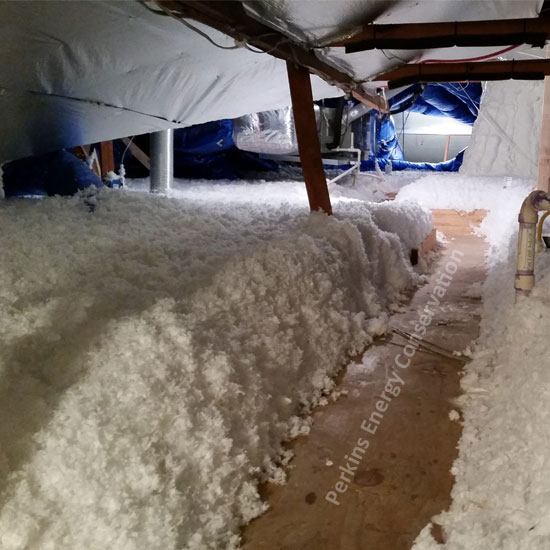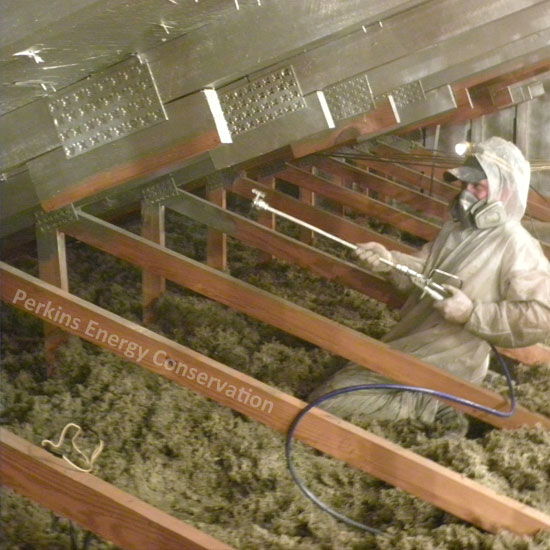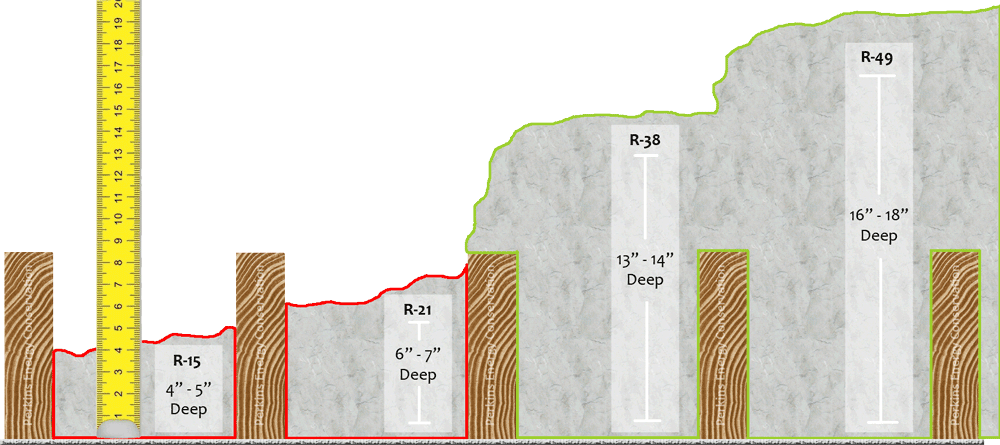Foil Radiant Barrier
Foil radiant barrier insulation reflects and redirects radiant heat, creating a foil barrier that enhances energy efficiency and helps lower attic temperatures.
Spray Radiant Barrier
Spray radiant barrier, applied as a paint layer, forms a seamless shield, providing effective heat reflection and insulation for various surfaces and structures.
Blown Attic Insulation
After installing a foil radiant barrier in the attic, consider upgrading blown insulation for a comprehensive solution, combining reflective heat control with enhanced thermal insulation for optimal energy efficiency.
Learn MoreFoil And Spray Radiant Barrier
Foil And Spray Radiant Barrier
Foil radiant barriers and spray radiant barriers represent two innovative approaches to managing heat transfer in residential and commercial structures. Foil radiant barriers typically consist of a reflective foil material installed in attics or on walls, reflecting radiant heat and preventing it from penetrating into the living spaces. These barriers are highly effective in reducing cooling costs during hot weather by reflecting a significant portion of the sun's energy away from the building.
In contrast, spray radiant barriers are applied as a thin layer directly onto surfaces, providing seamless and efficient heat reflection. This method is versatile, as it can be applied to various surfaces, including roofs, walls, and ceilings, creating a protective barrier against radiant heat. Both foil and spray radiant barriers contribute to improved energy efficiency, making them valuable additions to homes and commercial structures seeking enhanced thermal control and reduced reliance on heating and cooling systems.

Why Install Radiant Barrier

Installing a foil radiant barrier or spray radiant barrier in your home offers compelling advantages in terms of energy efficiency and comfort. Foil radiant barriers, when properly installed in attics or walls, act as a reflective shield against radiant heat, reducing the absorption of heat into your living spaces. This results in cooler indoor temperatures during hot weather, reducing the workload on your cooling system and potentially leading to lower energy bills. The reflective properties of foil radiant barriers make them an excellent choice for homes in regions with warm climates, contributing to a more sustainable and cost-effective approach to temperature control.
Similarly, spray radiant barriers offer versatility in application, allowing for targeted insulation on various surfaces such as roofs, walls, or ceilings. The spray application creates a seamless barrier that reflects radiant heat, minimizing heat absorption and enhancing overall energy efficiency. By incorporating either foil or spray radiant barriers into your home, you create a thermal envelope that reduces the need for excessive heating or cooling, fostering a more comfortable living environment and contributing to long-term energy savings.
Why Radiant Barrier:
- Radiant barriers, whether foil or spray, enhance energy efficiency by reflecting radiant heat away from your living spaces.
- In warm climates, radiant barriers help maintain cooler attic temperatures, reducing the reliance on air conditioning and lowering cooling costs.
- Radiant barriers can be installed in various locations, including attics, walls, roofs, and ceilings, providing versatile solutions for different structures.
- Both foil and spray radiant barriers seamlessly integrate into existing structures, offering a non-intrusive solution for improving energy efficiency.
- The installation of radiant barriers has the potential to lead to long-term energy savings.
- The energy-efficient features provided by radiant barriers can enhance the overall value of your home
- Spray and foil radiant barriers complement blown attic insulation, enhancing overall thermal performance.




Do You Have Enough Insulation?
All it takes is a quick peek to find out! Many older homes have more air leaks and less insulation than homes built today. If your attic floor is insulated but the wood beams (joists) are still visible, you probably don’t have enough attic insulation and it wouldn’t be a bad idea to reach out to us today for a free insulation quote!


